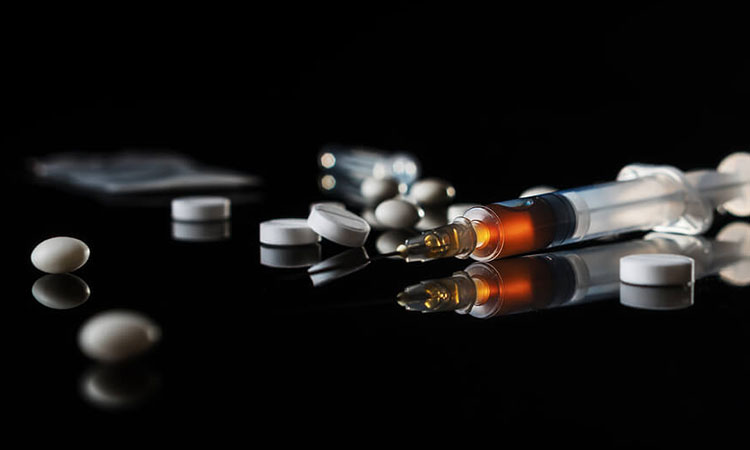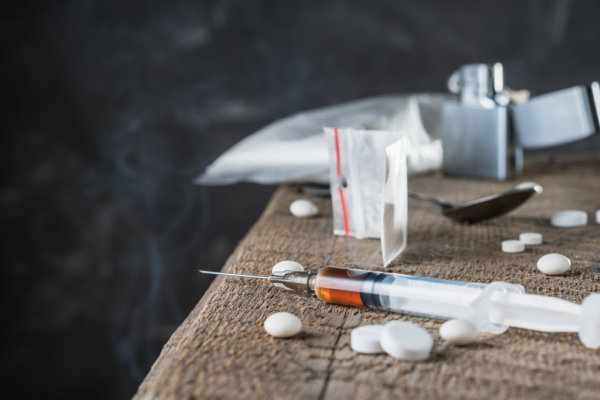
Identifying Opioid Use Disorder – Due to the ongoing opioid epidemic in the U.S., identifying or diagnosing opioid use disorder in individuals has become more critical than ever.
Discovering whether a loved one is engaging in opioid misuse, abuse, or is suffering from an active addiction may be challenging initially. A solid determination can involve many factors that rely on the close observation of signs, symptoms, and behavioral changes.
Opioids Defined
Opioids are prescription or illicit drugs that include hydrocodone, oxycodone, heroin, and fentanyl among many, many others. Doctors often prescribe them legally for treating acute moderate to severe pain. But, due to their highly addictive nature, patients may begin misusing them.
Others commence their opioid abuse with legitimately or illicitly obtained pharmaceuticals, but switch to heroin or other illegal drugs when they can no longer afford or obtain their original drug(s) of choice. And, tragically, many people experiment with heroin, which is more powerful than most prescription opioids and can prove addictive with remarkably little use.
Opioids act on the limbic system, the spinal cord, and brain, where they bind to receptors. These receptors release an excessive amount of neurotransmitters, such as dopamine, that are responsible for feelings of reward and well-being. It doesn’t matter whether we’re talking about prescription medications or illegal street drugs; the principal effect is the same.
The main difference between these kinds of drugs is their potentials for abuse or addiction. The more potent the drug, the higher its addiction potential. Furthermore, the method of administration makes a difference, as well. Swallowing a pill is less likely to rapidly result in tolerance and dependence versus snorting or injecting a powder, which reaches the brain faster and more intensely.
Opioid Use Disorder: Symptoms
According to the Diagnostic and Statistical Manual of Mental Disorders (5th ed.), an opioid use disorder is defined as problematic opioid use that leads to serious impairment or distress.
Opioid Use Disorder Diagnostic Criteria
To qualify for a diagnosis of opioid use disorder, a person must experience two or more of the following symptoms within a 12-month time period:
1. The substance is used in larger amounts or for a longer time than intended.
2. There is persistent desire or unsuccessful attempts to cut down or control the use of a substance.
3. A considerable amount of time is spent attaining, using, or recovering from substance use.
4. The person is experiencing cravings to use opioids.
5. There is continued opioid use that results in failure to fulfill important obligations at work, school, or home.
6. There is continued opioid use despite recurrent social or interpersonal problems that result from this use.
7. Important social or recreational activities are undervalued in favor of opioid use.
8. There is repeated opioid use in dangerous situations.
9. Opioid use is continued despite physical or psychological problems that develop as a result of use.
10. Tolerance occurs, which is characterized by the need to take higher doses of a drug to experience the desired effects, or a diminished effect from the same amount).
11. Uncomfortable and painful withdrawal symptoms occur upon cessation of drug use.
An opioid use disorder may be considered as mild (2-3 symptoms), moderate (4-5 symptoms), or severe (6 or more symptoms) in nature. A mild disorder may be more indicative of misuse or abuse, whereas a severe disorder would likely be considered full-blown addiction. These disorders exist of a spectrum, however, and like any chronic disease, the severity of symptoms may wax and wane over time.
The terms “abuse” and “addiction” may be thought of as archaic when used alongside the more contemporary concept of “opioid use disorder.” These older terms are simply ways of expressing different levels of problems controlling drug use and the effects they have on one’s health and life.
Signs and Symptoms of Opioid Use Disorder

In addition to diagnostic criteria, there are other common signs and symptoms of opioid misuse, abuse, or addiction, that may include the following:
- Impaired vision
- Gastrointestinal problems
- Dry mouth and nose
- Financial and legal problems
- Track marks (sores near injection sites)
- Emotional distress caused by strained relationships
- Anoxia or hypoxia (oxygen deficiency in tissues)
- Increased risk for suicidal thoughts or attempts
In addition to the aforementioned effects, users also tend to struggle with mental health problems, including depression, anxiety, bipolar disorder, post-traumatic stress disorder, and more.
Dependence and Withdrawal
Substance addiction alters the way in which a person’s brain functions, particularly the reward behavior circuits in your brain. For long-term users, drug use impacts the entire body. Over time, chronic use leads to dependence or a condition characterized by the body’s inability to function normally without exposure to the drug.
When a dependent person tries to cut back or stops using abruptly, they will experience unpleasant withdrawal symptoms, such as the following:
- Chills
- Depression
- Agitation
- Anxiety
- Drug cravings
- Diarrhea and abdominal pain
- Nausea and vomiting
- Body aches and pain
The intensity and duration of withdrawal symptoms vary between individuals and largely depends on the length and severity of use, in addition to other factors. The withdrawal process can be very harrowing to endure and can last for several days.
The Treatment Process

Most addiction treatment centers, such as Recovery By The Sea, customized their treatment plans to meet each patient’s unique needs and consider the history of drug abuse as well as mental and physical health. If you or a medical/mental health professional has identified problematic opioid use by a loved one, it is probably time to look into treatment options.
Treatments take different forms, can last for varying periods, and can take place in a variety of settings. However, comprehensive medical care that takes place over a prolonged period has been clinically shown to be related to better outcomes for persons in recovery.
For many, willpower is not enough to sustain long-term sobriety, and thanks to modern medicine, it doesn’t have to be. There is medication available, such as Suboxone, that treats opioid use disorder by reducing withdrawal symptoms and cravings. Drugs such as these have been shown to be extremely helpful for preventing relapse and improving the overall well-being of the person in recovery.
With the addition of psychotherapy and professional counseling, the chances of succeeding have vastly improved over the last few decades. Following medical treatment, thousands of people continue to be helped by traditional approaches to recovery maintenance such as 12-step programs and holistic mind-body connection strategies like mindfulness.
Get Help Today
An opioid use disorder is not a sign of moral decay or weakness – it is a chronic and serious medical condition characterized by changes in the brain due to extended drug use. Breaking free of addiction is a long and sometimes arduous process that requires patience, focus, and tremendous support from medical and mental health professionals and loved ones.
Recovery by the Sea employs highly-skilled addiction specialists who deliver comprehensive, evidence-based services to clients with care and expertise. We are dedicated to providing clients with the tools, resources, and support they so urgently need to achieve abstinence and begin their journey to long-lasting wellness and sobriety.
If you or a loved one is struggling with an opioid use disorder, please contact us today to discuss treatment options and find out how we can help!